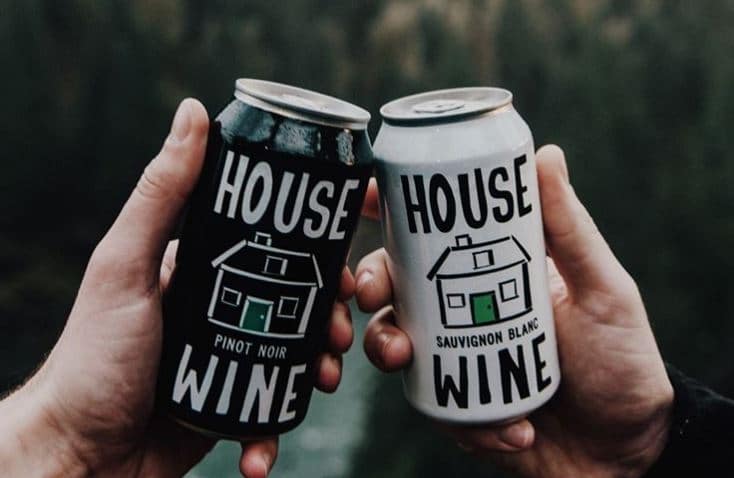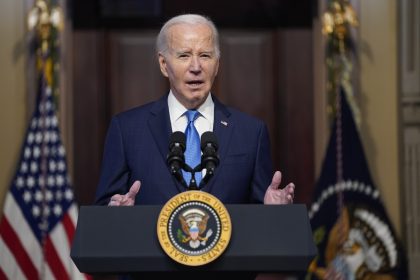Treasury Department Aims to Make it Easier to Buy Single-Serve Wine

WASHINGTON – The Treasury Department, responding to an explosion in the sale of wine in cans and single-serve bottles, is seeking public comment of eliminating all but the minimum “stand of fill” for wine containers.
In a Federal Register notice published Monday, the department’s Bureau of Alcohol and Tobacco Tax and Trade said the change would free the wine industry from unnecessary regulations while giving consumers broader purchasing options.
At the same time, the bureau, which regulates both the size of bottles and the extent to which they’re filled, said doing away with the current fill standard will “eliminate restrictions that inhibit competition and the movement of goods in domestic and international commerce.”
In announcing the proposed rule changes, the bureau said sales of canned wine have grown rapidly in recent years, reaching $28 million in 2016, up from $14.5 million in 2016 and $6.4 million in 2015.
Despite this rapid growth, canned wine still accounts for only about 0.2 percent of all wine sales, fueling concern at the bureau that the current standard of fill is unnecessarily limiting manufacturing options, “particularly where consumers may seek smaller containers to target a specific amount of consumption.”
Among the challenges the new regulatory regime is meant to address is that the most common size of aluminum cans is 200 milliliters, while the closest size of packaging prescribed in the existing standards of fill is the187 milliliter can.
As a result, can makers are forced to reconfigure equipment to make cans to serve the market, adding substantially to the cost passed on the wine industry and ultimately, consumers.
“Petitions from industry indicate that the fixed costs associated with the production of 187 milliliter cans rather than 200 milliliter cans are substantial,” the Federal Register notice said. “Eliminating the standards of fill would allow wine makers to harness economies of scale and achieve lower costs by using the common 200 milliliter cans.”
In eliminating the current standards of fill, the bureau is also proposing a new standard for the bottle “headspace,” a term of art for the fill level of wine containers, to help facilitate the growth of another single-serve wine market — pre-sealed single glasses of wine.
Specifically, the bureau has proposed allowing wine bottled in a clear, 100-milliliter or smaller container to contain a headspace of not more than 30 percent of the total capacity of the container.
“The proposed revision would allow more wine products to be bottled in individually sealed glasses,” the notice said.
The bureau said it has received a number of petitions from the industry regarding the sale of a sealed glass of wine which allows consumers to drink a glass of wine without having to open a full bottle.
The current regulation requires a headspace not in excess of 10 percent for containers smaller than 187 milliliters. But according to importers, bottlers and others, a minimum headspace of 25 to 30 percent is required to keep wine away from the edge of the glass during the manufacturing process, thus ensuring the glass container is sealed correctly.
In addition, the industry has told federal regulators, if the headspace were the required 10 percent, consumers would likely spill the contents when peeling off the aluminum foil due to the strength of the seal.
The bureau went on to say the proposed deregulation “could, if implemented, create a range of benefits.”
“These include increasing economic efficiency by allowing producers to harness economies of scale, increasing the variety of products available to consumers, and increasing the competitiveness of the market for wine,” it said.
Finally, the bureau said eliminating the current standard of fill would allow imports from countries and wine regions that have been previously shut out of the U.S. market because their products are produced in quantities that do not match the standards of fill in the United States.
These include the importation of the French product known as ‘‘vin jaune’’ (‘‘yellow wine’’ in English). Vin Jaune is made in the Jura region of France, using a technique similar to that used for making Sherry.
In accordance with French and European Union regulations, it must be sold in a 620 milliliter bottle. Since 620 milliliters is not an authorized size under U.S. regulations, Vin Jaune cannot be imported into the United States.
Another issue came from the nation of Georgia, which has requested the bureau add a 700-milliliter bottle to the authorized standards of fill. In doing so, Georgian officials stated that the 700-milliliter bottle was a standard size in the former Soviet Union, and the addition of the 700-milliliter standard of fill in the regulations would eliminate a restriction on the sale of Georgian wines in the United States.
Standards of fill for wine were first established in the United States in October 1941, and ranged from 2 ounces to 4.9 gallons. Perhaps the biggest change ever to occur in these standards came in 1974, when the bureau’s predecessor agency, the Bureau of Alcohol, Tobacco and Firearms, adopted metric standards of fill for wine containers.
Although the bureau wants to eliminate the current standard of fill, it said the new regulation would maintain a minimum standard of 50 milliliters for containers. The minimum container size is needed to ensure sufficient space on the container for required labeling, it explained.
The deadline to submit comments on the proposed changes is August 30, 2019.
The bureau requests that comments be submitted online at https:// www.regulations.gov (via the online comment form for this document as posted within Docket No. TTB–2019– 0004 at ‘‘Regulations.gov,’’ the Federal e-rulemaking portal); by mail, addressed to: Director, Regulations and Rulings Division, Alcohol and Tobacco Tax and Trade Bureau, 1310 G Street NW, Box 12, Washington, DC 20005; or hand delivered to the Alcohol and Tobacco Tax and Trade Bureau, 1310 G Street NW, Suite 400E, Washington, DC 20005.























